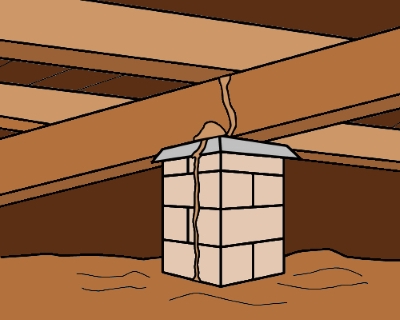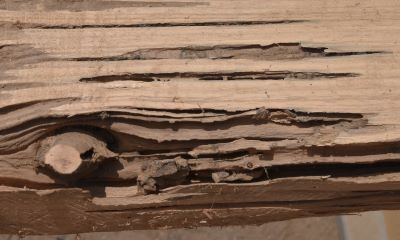Termites

this example is Coptotermes acinaciformis
Although there are about 300 species of termites in Australia, only a dozen or so are a problem for timber in buildings. Most termites feed on grass and roots, as well as living trees and decaying wood.
Termite colonies can contain up to several million members, so when they find a good source of food they’re capable of causing a lot of destruction.

running from the ground under a house,
up the brick pier, around the ant cap,
and into the timber bearer
Some species of termites have a whitish skin colour, which is why they’re often called ‘white ants’. However, they aren’t really ants, and are actually biologically closer to cockroaches.
The termites that cause the most damage to building timbers are the subterranean species. They typically have their nest in a tree or partially decayed piece of wood buried in the ground. From here, they tunnel through the soil looking for food.
Because they need to be protected from daylight and the external atmosphere, they always leave a veneer of wood on the outside of a piece. This is why infested timber in a building often has a drummy or papery sound when it’s tapped.

exposed when the timber was re-sawn
In subfloor areas of buildings, termites sometimes build mud-covered shelter tubes over the foundations and up piers or walls to get to the timber bearers and joists. Although ant caps aren’t able to stop their progress, the caps do make the tubes more visible when an inspection is carried out.
Apart from the subterranean termites, there are some dry wood species which can infest building timbers without needing direct ground contact. However, they are only found in certain tropical and sub-tropical coastal regions.